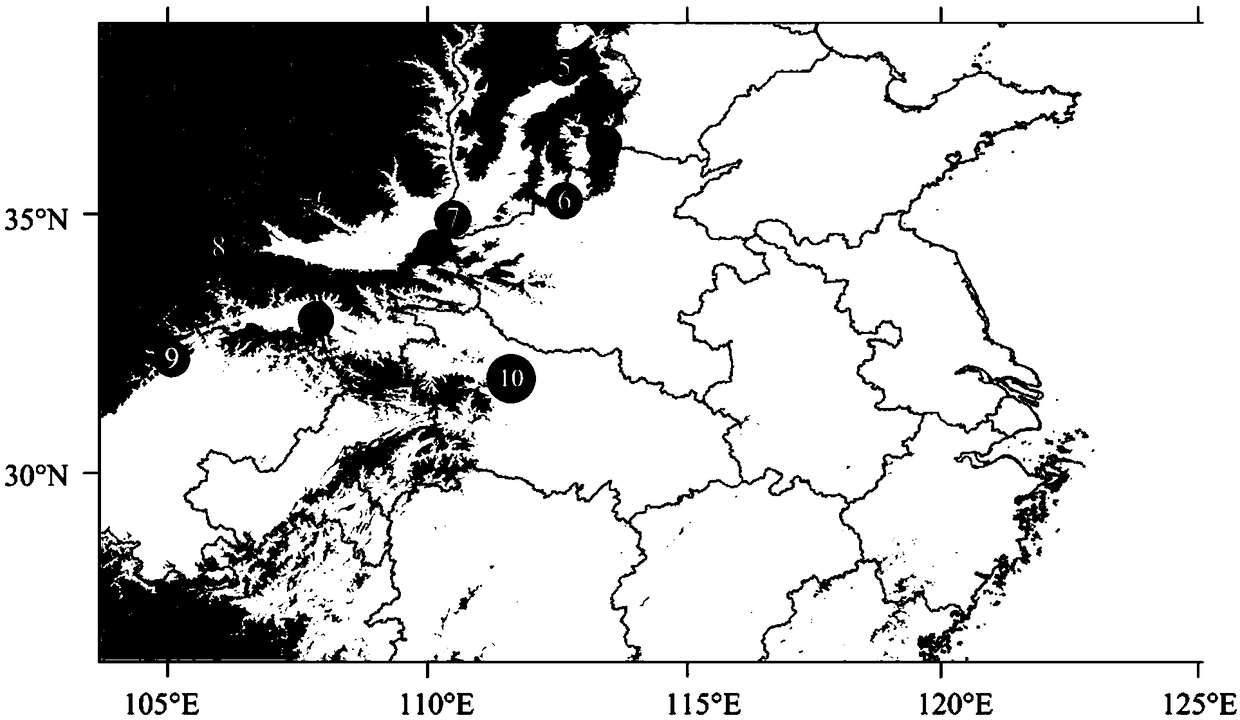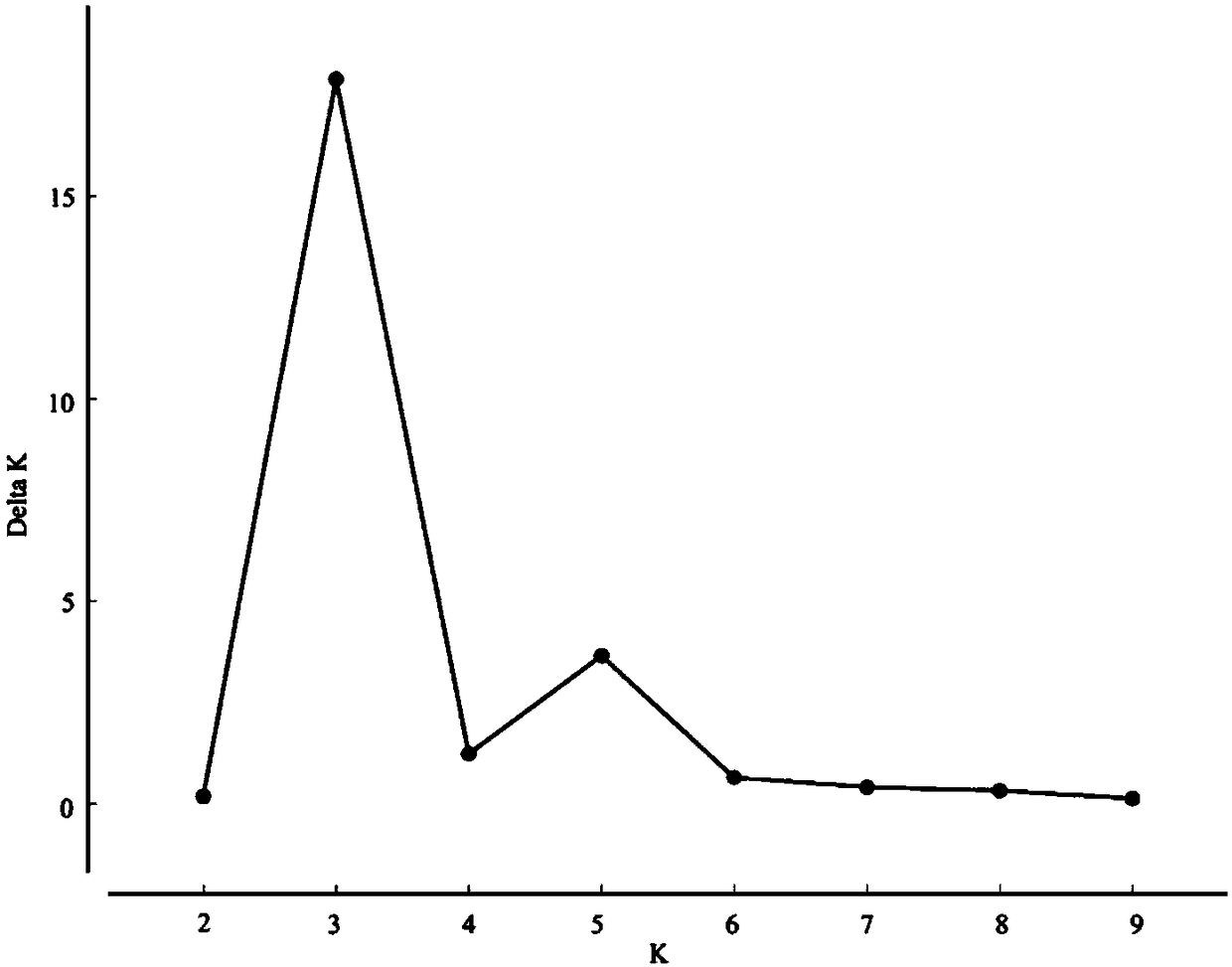Method for evaluating species adaptation potential by landscape genomics, and application
A technology of genomics and species, applied in the field of landscape genomics to evaluate the adaptive potential of species, can solve the problem that there is no landscape adaptive index to measure the adaptive potential of species
- Summary
- Abstract
- Description
- Claims
- Application Information
AI Technical Summary
Problems solved by technology
Method used
Image
Examples
Embodiment 1
[0058] Pinus bungeana Zucc.ex Endl. (Pinaceae), a coniferous evergreen tree at an altitude of 500-1800 meters, in the warm temperate and subtropical marginal regions of China. The white bark pine is endemic to China and is listed as an endangered species by the IUCN. White bark pine likes light, tolerates cold and drought, but lacks waterlogging. This species prefers to grow in cool, dry environments and does not grow well in high temperatures and high humidity. In this paper, using the method of landscape genomics, a sampling survey of natural populations of Pine bark in 10 distribution areas was carried out, the adaptive loci on the genome of Pine bark were identified, and a landscape adaptability index was established based on molecular marker data. Example 1, taking white bark pine as an example, provides a method for evaluating species adaptation potential using landscape genomics, including the following steps:
[0059] S1, determine the scope of the area to be studied...
PUM
 Login to View More
Login to View More Abstract
Description
Claims
Application Information
 Login to View More
Login to View More - R&D
- Intellectual Property
- Life Sciences
- Materials
- Tech Scout
- Unparalleled Data Quality
- Higher Quality Content
- 60% Fewer Hallucinations
Browse by: Latest US Patents, China's latest patents, Technical Efficacy Thesaurus, Application Domain, Technology Topic, Popular Technical Reports.
© 2025 PatSnap. All rights reserved.Legal|Privacy policy|Modern Slavery Act Transparency Statement|Sitemap|About US| Contact US: help@patsnap.com



